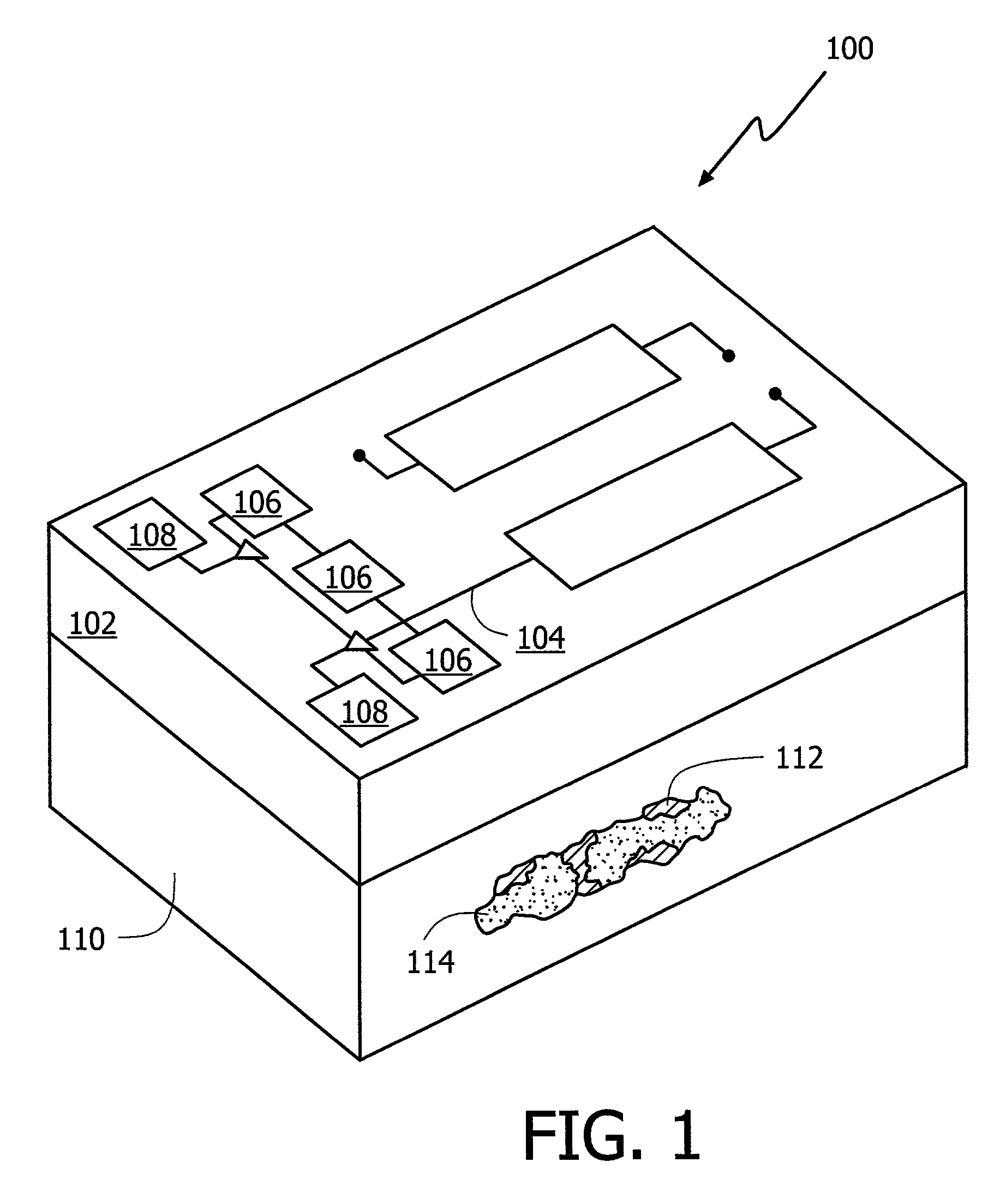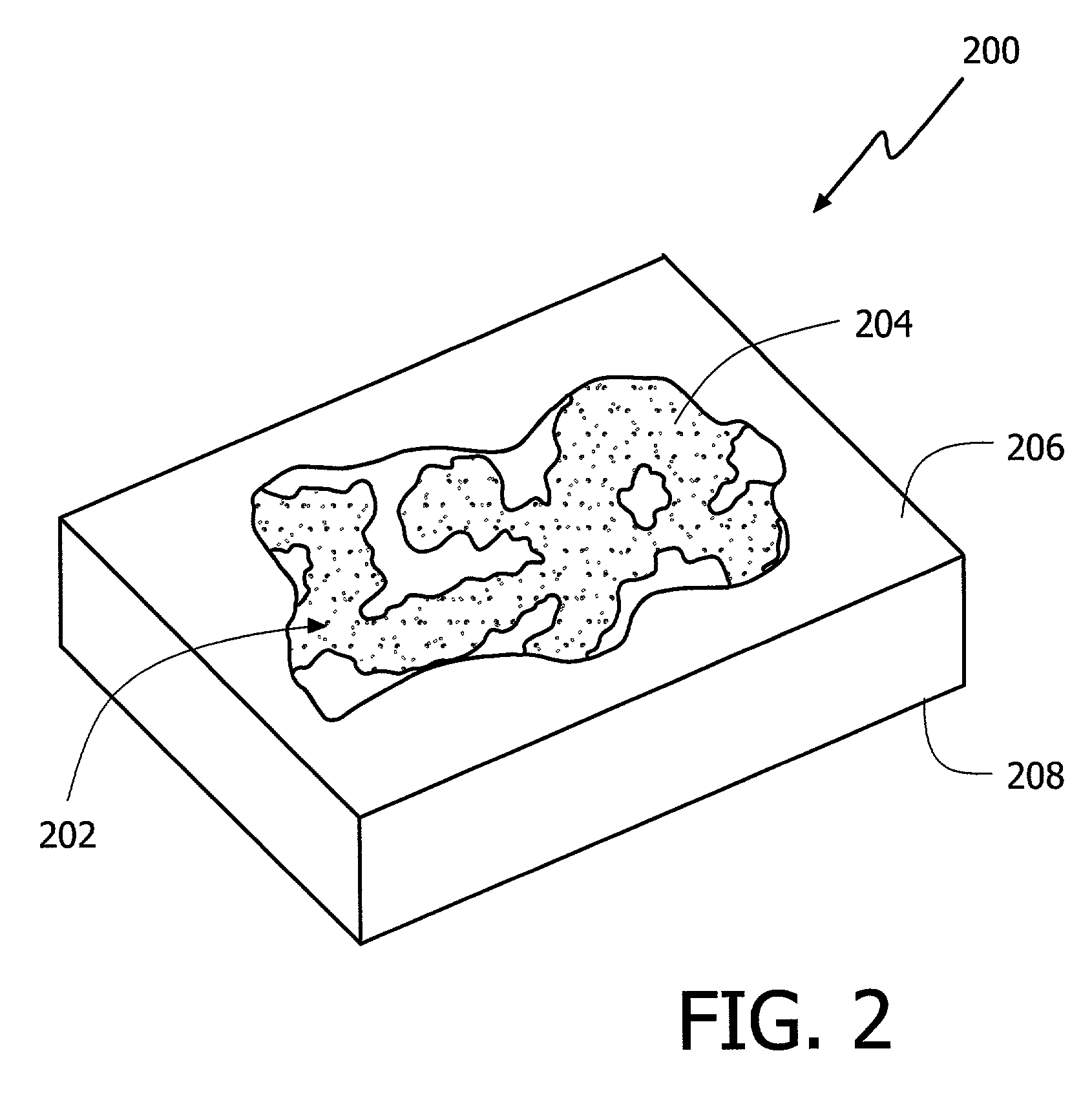Integrated power and cooling architecture
a technology of power and cooling architecture and integrated structure, which is applied in the direction of power cables, cables, electrical apparatus casings/cabinets/drawers, etc., can solve the problems of high cost, high cost, and high cost of components, and achieves a smaller packaging envelope, increased output power, and high reliability operation.
- Summary
- Abstract
- Description
- Claims
- Application Information
AI Technical Summary
Benefits of technology
Problems solved by technology
Method used
Image
Examples
Embodiment Construction
[0025]An exemplary integrated power and cooling apparatus for electronics is illustrated in FIG. 1 as an apparatus 100. The FIG. 1 apparatus 100 includes a substrate 102 having an electrical conductor 104, an energy storage device 106 mounted on the substrate 102, an electrical load 108 mounted on the substrate 102 in electrical communication with the energy storage device 106, and a thermal management structure 110 abutting the substrate 102. The thermal management structure 110 has a structural support 112 and a phase change material 114 integrated into a void space of the structural support 112. The thermal management structure 110 is in thermal communication with at least a portion of a heat producing section of the electrical load 108.
[0026]The apparatus has a substrate represented by substrate 102. In exemplary embodiments, the substrate is a composite-based or metallic-based structure. For example, the substrate can be graphite or silicon-carbide-aluminum (SiC / Al) based. The ...
PUM
 Login to View More
Login to View More Abstract
Description
Claims
Application Information
 Login to View More
Login to View More - R&D
- Intellectual Property
- Life Sciences
- Materials
- Tech Scout
- Unparalleled Data Quality
- Higher Quality Content
- 60% Fewer Hallucinations
Browse by: Latest US Patents, China's latest patents, Technical Efficacy Thesaurus, Application Domain, Technology Topic, Popular Technical Reports.
© 2025 PatSnap. All rights reserved.Legal|Privacy policy|Modern Slavery Act Transparency Statement|Sitemap|About US| Contact US: help@patsnap.com



